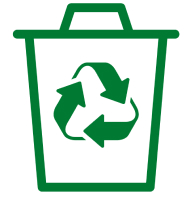Food Scraps Recycling – New Proposed NYSDEC Part 350 Regulations
In support of our clients, impacted businesses and local governments, B&L has been tracking the New York State Food Scraps Recycling Law enacted in 2019. The State Department of Environmental Conservation (DEC) recently published draft regulations to implement the law starting January 1, 2022. The law and regulations require that large generators of food scraps (an annual average of 2 tons per week or more) must donate excess edible food and recycle the remaining scraps where there is an organics recycling facility within 25 miles.
DEC has developed draft regulations to implement the new law which can be found here.
Comments on the draft regulations are being accepted through April 27, 2021, and should be sent to FoodScrapsLaw@dec.ny.gov or NYSDEC, Materials Management Division, 625 Broadway, Albany, NY 12233-7253.
The DEC has scheduled three webinars on the new requirements (preregistration required on the NYSDEC website):
- March 23, 2021 @ 1:00 pm
- May 12, 2021 @ 10:00am
- June 22, 2021 @ 1:30pm
Some noteworthy provisions of the proposed regulations include:
-
Food scrap generators (annual average of 2 tons per week or more) include supermarkets, food service businesses, restaurants, institutions of higher education, hotels, food processors, correctional facilities, sports and entertainment venues. DEC will publish a list of food scraps generators by June 1, 2021 and each year thereafter.
-
Exemptions include cities with a population greater than 1 million, hospitals, nursing homes, adult care facilities, elementary and secondary schools.
-
Temporary waivers can be requested.
-
Disposal of food scraps from designated generators at a landfill facility or a combustion facility is prohibited.
-
“If food scraps are sent to a facility that accepts multiple waste streams (an anaerobic digester, for example), the portion of the resultant material derived from food scraps must be used in a beneficial manner and not landfilled or combusted unless otherwise approved.”
Interest in recycling food waste is growing. Food waste recycling initiatives are targeting what is estimated to be 20% -30% of the total solid waste stream. Generators both large and small are starting to develop plans for separating and transporting food scraps while looking for a recycling facility to accept the food waste. Haulers are being asked how they can move food waste economically. Local solid waste managers are calculating whether or not they can provide a facility to process food waste on a sustainable basis.
All this presents significant challenges, not the least of which is estimating the impact of COVID-19 and how food scrap generation may change in the future. It may also be worth noting that while the law and regulations are targeting large scale generators, other initiatives are advocating an expansion of the law to include all generators of food waste.
B&L’s Solid Waste team stands ready to provide assistance with the implementation of this law. Local solid waste facility owners and operators are likely to start getting questions about accepting source separated food scraps and possibly the development of new facilities. We’ve been working with clients on several different approaches to recover food waste including projects that will combine source separated green waste with food scraps in aerated compost operations to produce material that can be used in a number of agricultural and horticultural operations. Co-digestion of various food waste streams with traditional wastewater treatment plant solids has also been an area of focus including a recent food waste processing facility that receives and processes food waste, removes contaminants, and conveys the material to a large-scale anaerobic digester at the adjacent wastewater treatment plant.
Please feel free to contact B&L Senior Project Manager Hans Arnold at 315-457-5200 x 1421 if you have an interest in pursuing a program to divert, recover, and utilize food wastes generated in your community.
Related Resources
October 29, 2021
New York State Climate Leadership and Community Protection Act and Its Impacts on the Solid Waste Industry
December 5, 2022
Solid Waste Management: Organics Recycling and Waste Diversion Focused on Food Residual
June 22, 2022
Proposed Changes to NYSDEC Part 360 Series Announced

This article is from members of the Solid Waste Practice Area.
Learn More

